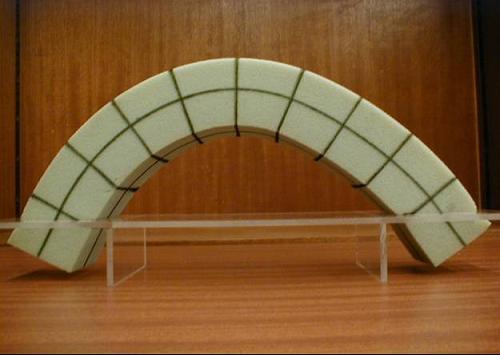Assumptions in beam bending
This demonstration examines some of the basic assumptions used in the theory of beam bending.


A symmetric sponge beam model is made which can be bent and twisted easily (Fig. 4-4a). Horizontal lines on the two vertical sides of the beam are drawn at mid-depth, indicating the neutral plane and vertical lines at equal intervals along the length of the sponge are made indicating the different cross sections of the beam.
Bending the beam as shown in Fig. 4-4b, it can be observed that:
- all of the vertical lines, which indicate what is happening to the cross sections of the beam, remain straight;
- the angles between the vertical lines and the centroidal line (neutral axis) remain at 90 degrees;
- the upper surface of the beam extends and the bottom surface shortens;
- the length of the centroidal (neutral) axis of the beam does not change.
